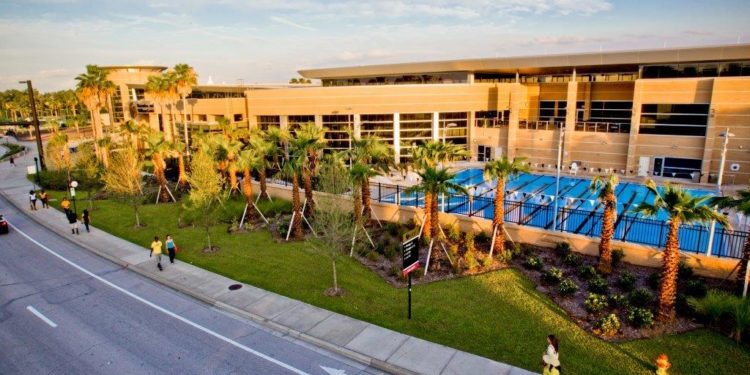Before the weather turns frosty, aquatics programming can be used to great effect in engaging students. To make aquatics programming work for you doesn’t require complicated planning, either — anything from consistent pool hours to movie nights can be a huge draw for students.
Here, Lisa Hedlund, the facilities and aquatics coordinator at the University of Central Florida, talks about her department’s aquatics programming and how it drives engagement:
CR: What aquatics programming do you offer?
LH: We offer swim lessons, both private and group swim lessons to our student population of generally 18 and over. And then we offer a lifeguard certification course, in case we want to certify students and provide them employment on campus with our pools. We host special events at our pools such as sport club events, swim meets and water polo tournaments. We also have a triathlon club that uses our facility.
We have events geared toward our student population, including concerts and pool events with DJs. We do football viewings for away football games and frequently host movie nights with other areas on our campus.
We try to create programming for all sorts of abilities, skills, interests and engagement to bring people to our facilities for that health and well-being aspect of aquatics.
CR: How do you drive engagement?
LH: We like to market on multiple platforms. We use Facebook, Snapchat, Instagram and then we use subsets on the stories where you can post a specific, quick marketing post. People can see that and look through multiple posts per day to see what we’re offering.
We also use the TVs throughout our facility — they have slides that rotate throughout the day and have our events on them. We try to engage students with some things that they like. Free food, free shirts and music are things we have found really draw students. Those are some of the basics we try to include in our events. We find you get a different group depending on the event — for example, you’re going to get a lot of freshmen for events on a Friday night at our leisure pool because it’s right next to our housing facilities.
CR: How do you determine which programs to keep or get rid of?
LH: One of the difficult things is there are factors we can’t control in Florida, because of the weather. We have two outdoor facilities, so that can be a hindrance. We always try to put a program on for multiple years so we can see if it is a success. One year, it might be not as well attended because of weather; then the next year we push it into a part of the season when there isn’t as much rain. We try to help with some of those variables if that’s the case. A lot of times, we just do assessments via a survey with our participants.
We try to update based on those survey results, talking to students and participants, and knowing what trends are going on, and then sticking with what will engage students.
CR: Has aquatics programming benefitted campus rec involvement as a whole?
LH: Absolutely. People come on a regular basis — they don’t just walk in the facility and walk out. It’s more of an ownership of their rec center involvement. They get to be part of something rather than coming in simply to use the facility. It draws them in, keeps them coming back and gives them a personal relationship with our staff and instructors.










